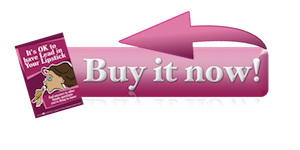Is it true that cosmetics are unregulated and that companies can put anything they want in beauty products? Find out as Perry and I talk about the laws that govern the cosmetics industry. We also discuss a news story about the placebo effect in drugs and cosmetics. Super Special Bonus: Perry uncovers cosmetic chemists in comic books and movies!
If you enjoy our podcast will you PLEASE show your support and buy our new book?
Click here to get your copy for only $2.99
(That’s less than a cup of Starbucks!)
SHOW NOTES
Beauty Science News: “Half Of A Drug’s Power Comes From Thinking It Will Work”
This report involves a pain medication study and the author says: “Basically we show that words can actually double the effect of a drug. That’s pretty impressive.” Here’s what they tested and what they found:
- No treatment: 15 percent increase in pain.
- Known placebo: 26 percent decrease.
- Placebo labeled Maxalt: 25 percent decrease.
- Maxalt labeled as placebo: 36 percent decrease.
- Mystery pill (Maxalt or placebo): 40 percent decrease.
- Known Maxalt: 40 percent decrease.
The “mind over matter” effect of placebos is similar to what we call the “halo effect” in cosmetics.
Listener question: Sarah wants to know about regulation in the cosmetic industry
The idea that the cosmetic industry is unregulated and that “anyone can put anything in any product” is a myth. In fact, there are 3 levels of regulation to which the industry is subjected: federal, state, self-regulation.
Federal level
The Food, Drug & Cosmetic Act
- Prohibits “poisonous or deleterious substances”
- Restricts particular ingredients
- Mandates claim substantiation
- Regulates color additives
- Requires warning label for coal tar based hair dyes
Important point that causes confusion: The FDC act does NOT require companies must test their products for safety prior to marketing. If the FDA determines that the safety of a product has NOT been substantiated, the product is misbranded (illegal).
What can the FDA do?
- Prosecution – Criminal charge against the company.
- Seizure – Federal marshals takes possession of all products.
- Injunction – Civil action that requires you stop making and distributing the product.
- Recall – Companies have to pull products off the shelf.
The Fair Packaging and Labeling Act
Mandates that labels must include the following:
- Product identity
- Net contents (also includes provisions against under-filling.)
- Name and location of manufacturer.
- List of ingredients.
- Warning statements (when needed)
The FDA’s Over the Counter Drug review
This is another way the FDA has jurisdiction over cosmetics (at least for cosmetic-drugs)
Other laws which grant additional oversight but not JUST to cosmetics:
Toxic Substances Control Act
Under the jurisdiction of the EPA
Controls single ingredients, not finished products.
No direct authority over cosmetics but if the EPA rules that an ingredient is dangerous, you can expect the FDA will look at it as well and likely consider it to cause the product to be adulterated and therefore it would fall under their jurisdiction under the FDC act.
Federal Trade Commission
Regulates advertising. They prohibit “unfair or deceptive acts or practices affecting commerce.” That’s pretty broad.
The NAD is a second source of advertising regulation They are more likely to challenge cosmetic ads but they don’t really have any authority to take action. Instead what they do is turn the issue over to the FTC.
Consumer Product Safety Commission
The CPSC has authority over:
- Soap
- Hazards presented by cosmetic containers – glass packaging which is breakable, or packages with small parts that could endanger children.
- Special packaging standards under the Poison Control Act (e.g. child proof caps.)
State regulations
In addition to these federal controls, states are free to pass whatever laws related to cosmetics that they want as long as their laws don’t conflict with federal mandates.
Every state has regulations that apply to soap and cosmetics. Most of them follow the FDA regulations pretty closely, but some have more extensive requirements. For example:
- California pioneered legislation which restricts VOCs is determined.
- Florida requires a “cosmetic manufacturer permit” for any person that manufactures or repackages cosmetics in Florida.
- Maryland outlawed specific phthalates in cosmetics.
Self-regulation of cosmetics
Finally, on top of all these federal and state restrictions, the cosmetic industry polices itself through the following voluntary registration programs:
- Registration of manufacturing facilities
- Registration of cosmetic raw material composition and ingredient statements
- Filing of adverse product experiences
These all help the government get access to information it needs to ensure safety.
The bottom line
Contrary to what misinformed people may tell you, cosmetics are regulated on three levels: Federal, state, and industry self regulation. You may disagree with the level of regulation or how they are enforced but you can’t honestly claim there are NO regulations.

Buy your copy of It’s OK to Have Lead in Your Lipstick to learn more about:
- Clever lies that the beauty companies tell you.
- The straight scoop of which beauty myths are true and which are just urban legends.
- Which ingredients are really scary and which ones are just scaremongering by the media to incite an irrational fear of chemicals.
- How to tell the difference between the products that are really green and the ones that are just trying to get more of your hard earned money by labeling them “natural” or “organic.
Click here for all the The Beauty Brains podcasts.
